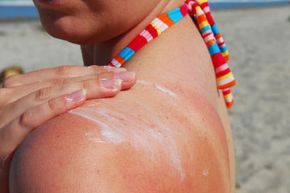Vitamin D -- specifically the form D3 -- is the only vitamin your body makes itself. It's fat-soluble, which means your body stores vitamin D in its adipose tissue -- in its fat. And, if you want to be specific about things, this vitamin is actually a hormone.
Vitamin D helps the body absorb calcium, increase bone density and reduces the risk of soft, weak bones, as well as bone fractures. It also helps with the body's bone development and muscle function, helps keep the immune system healthy, and helps keep insulin, calcium and phosphorus levels in balance. And emerging research is finding promising associations between our vitamin D consumption and decreased our risk of developing a variety of conditions including autoimmune diseases, cardiovascular disease, chronic inflammation, certain cancers and diabetes.
Advertisement
While vitamin D is all of these things, it might best be known as the sunshine vitamin. How much sunshine your body needs to boost vitamin D levels and how best to get it is up for debate.
Since 2010, the recommended daily allowance (RDA) of vitamin D falls between 600 and 800 International Unit (IU) per day (based on age), but new research suggests adults may actually need at least 2,000 IU of vitamin D every day to maintain a healthy level in the body and reap the most benefits [source: MayoClinic, Holick].
There are two ways we get our D other than exposure to sunlight: diet and supplements.
In your diet, you can get a natural form of vitamin D3 from foods such as egg yolks (one yolk has 20 IU of vitamin D) and fatty fish (you'll get 400 IU of vitamin D from 5 ounces of salmon). Alternatively, look for cereals, juices and other D-fortified foods to supplement your D intake. Milk, for example, is fortified with 100 IU per cup.
Realistically, though, not many of us can count on getting all our vitamin D needs from diet alone. Enter supplements. But the most efficient way to ensure your body gets the right amount? Let it make the D itself.
Advertisement

